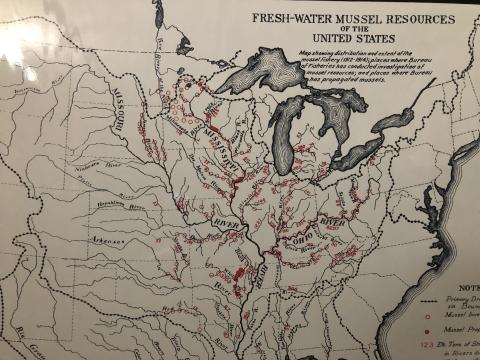With an expert eye, John Beopple surveyed the US rivers, making a great discovery in the Mississippi. He noticed a bend where the river slows down and the river was choked with mussel. Beopple had found his new home and the treasure for which he had searched. It wasn't gold, it wasn't silver, it was mother of pearl shell. Beopple set to work convincing investors of what he already knew, high profits could be made from the wealth of this natural resource. The demand for freshwater pearl buttons was so large, fishers (aka clammers) quickly over mined the river on the banks of Muscatine. In subsequent years the lakes, rivers and streams of 19 states were fished to produce needed shell material (in time, these waters were over mined as well). The expanding industry resulted in shell being shipped by barge and rail car to Muscatine to supply a booming labor force in Muscatine along with the continued expansion of the button factories (often blanking operations in effect). For any use other than instructional resources, please check with the organization that owns this item regarding copyright restrictions.
2020.004.003 [Map]
Legal Status
Ownership of this resource is held by the National Pearl Button Museum and has been provided here for educational purposes only, specifically for use in the Iowa Museum Association's "Teaching Iowa History" project. It may not be downloaded, reproduced or distributed in any format without written permission from the Rights Holder. For information on U.S. and International copyright laws, consult an attorney.

